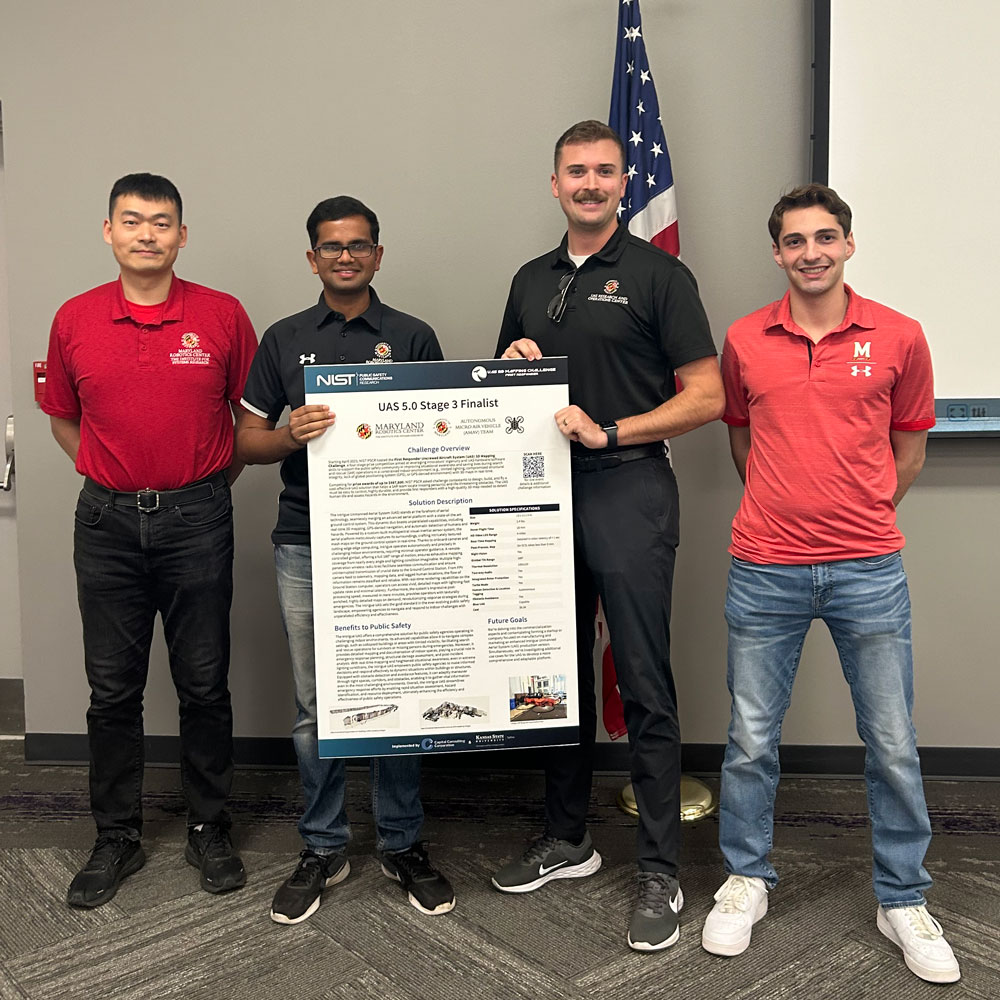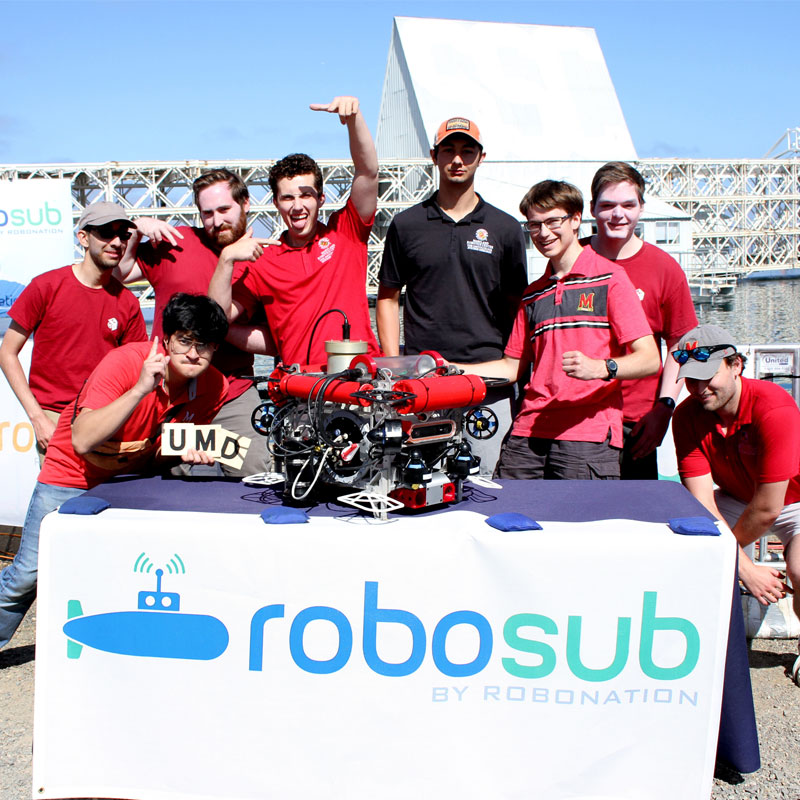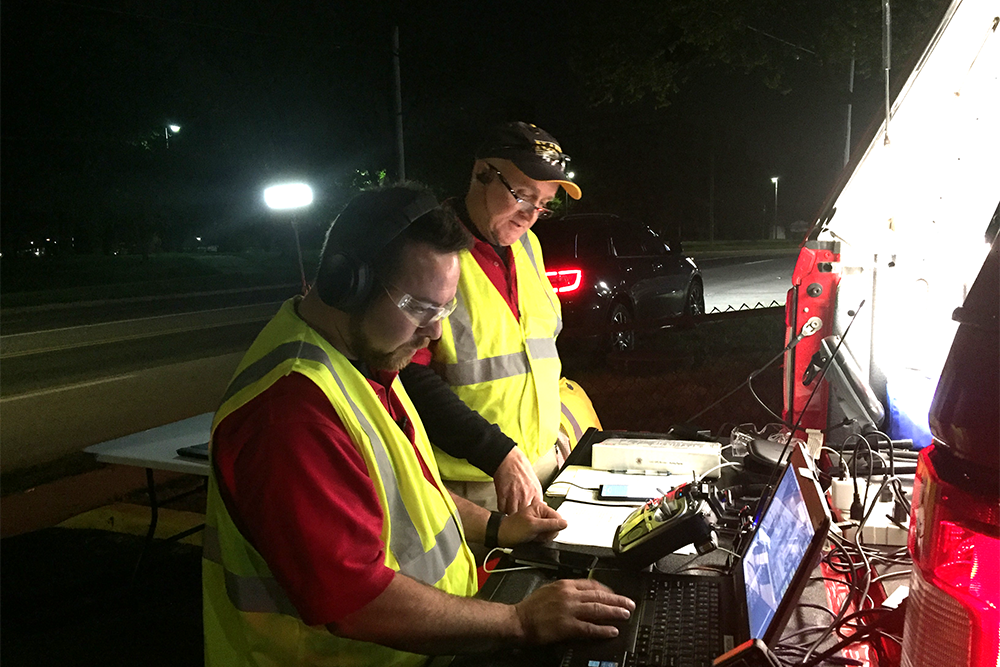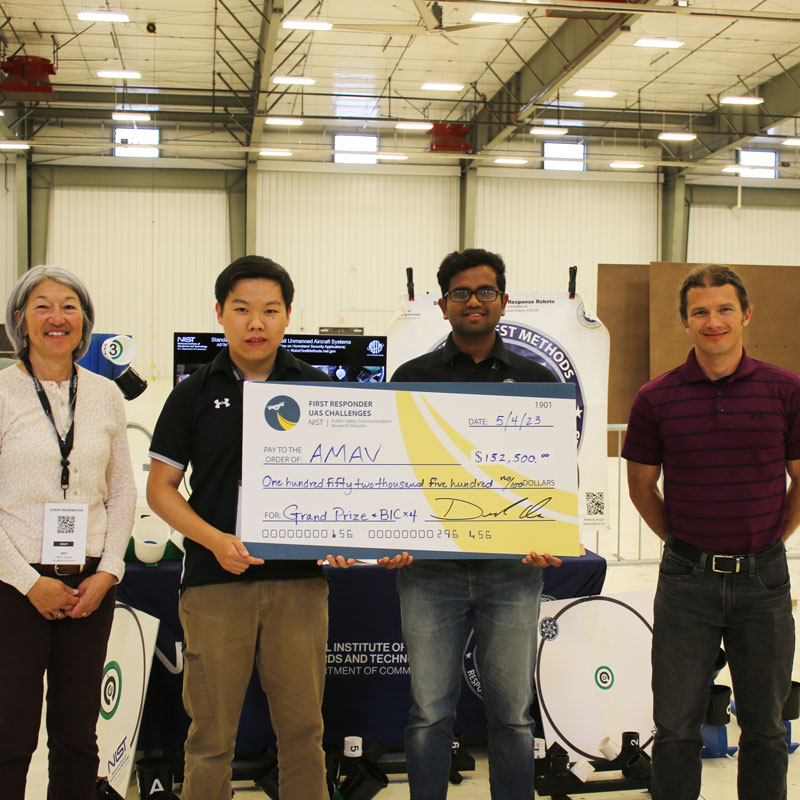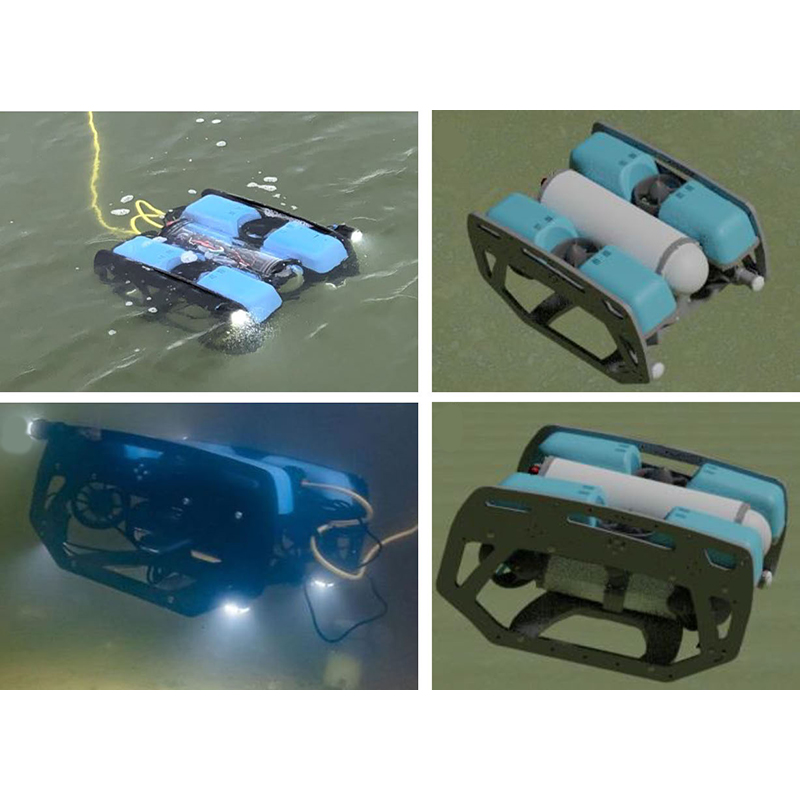News Story
Pilot’s Perspective: Six Tips for Flying in All Weather Conditions

This article from pilot Ryan Henderson appeared in the June 2018 edition of our quarterly newsletter. To subscribe, visit go.umd.edu/UASsubscribe.
Ask any pilot to identify the largest cause of flight cancellations and you’ll get the same answer: weather.
Beyond the obvious hurdle of getting and staying in the air, weather impacts motor performance, battery life, pilot focus, and more. And it doesn’t have to be extreme to be a factor. So before you reach for your controller, here are six tips to keep you in the air longer and on schedule.
1) Know the forecast
It seems obvious, but its importance bears repeating. Keep your eyes on forecasts from groups like AccuWeather, the National Weather Service, and the Weather Channel in the week prior to your flight day. Pay particular attention to next-day forecasts.
Look at more than just projected average wind speeds and chance of rain, too. Fog, low clouds, and a brilliant sun can obscure your line of sight, making your flight unsafe and potentially illegal depending on your permits. Fog—as well as extremely high humidity—can also ground operations for the sake of your electronics. Remember, just because it’s not raining doesn’t mean your drone won’t get wet.
2) Know the area
Even armed with the forecast, you can never know exactly what the day’s weather will bring. But knowing the area’s geography and climate can help you prepare for the most likely scenario. Is this region prone to late afternoon summer showers? Are there canyons that funnel wind or nearby lakes or large rivers that affect air currents? How does the weather differ at any moment in the hills vs. the plain below?
Asking yourself these types of questions is especially important if you’re flying in an area for the first time. Before the UAS Test Site set off for the deserts of Arizona, for example, I examined historical weather records for the area and inquired with the Bureau of Land Management about expecteds condition both in the air and on the ground.
3) Understand altitude
The higher you fly, the colder, wetter, and windier it is. If the aircraft ascends to an area of high winds and begins to blow off course, you may be able to regain control by descending.
4) Know your equipment
A DJI Mavic Pro can get up to 41 mph at full throttle. If gusts exceed that, a Mavic will blow away—possibly into something or someone. Notice that I said “gust.” Even if the average wind speed is 20 mph, you could still get gusts that get dangerously close to the drone’s top speed.
Study your drone’s user manual to find out what is too fast, hot, cold, or wet for a safe operation. Be sure to remove sand, dirt, and moisture from your vehicle and repair any nicks or other damage after each operation to keep things operating at peak efficiency. And if you have the resources to do so, pack a second vehicle with different thresholds. That gives you options before you have to shut things down.
Whatever you do, don’t push the boundaries of your system too far too soon. To operate safely at the limits of your system, you have to be extremely familiar with how it responds to different conditions.
5) Make contingency plans
You’re not really prepared for an operation until you have a plan B—and, even better, C and D. Before flight day arrives, pin down some if-then plans to ensure you’re making the most of whatever conditions you get. Maybe you can do some maintenance, test elements of your payload, or do an inventory of battery levels while you wait for clouds to pass. Or you can salvage the day with flights in the valley even if you can’t hit your more complex flights.
Depending on the size and geography of your flight area, you may even find that you can divide the area in two, fly where conditions are fair, and then circle back once the storm passes through. That’s what we had to do in Dominica as frequent rains passed over the island.
6) Don’t forget about you
An operation is only as good as its operator. Be sure that you have enough water, shade, fans, coats, gloves, and whatever else you need to stay focused on the task at hand. And, as with equipment, know your limits, and don’t push them all at once. You may make it through a single operation, but that strategy loses effectiveness quickly.
Tell us what you think, drop us a line at uasnews@umd.edu.
Published June 21, 2018


